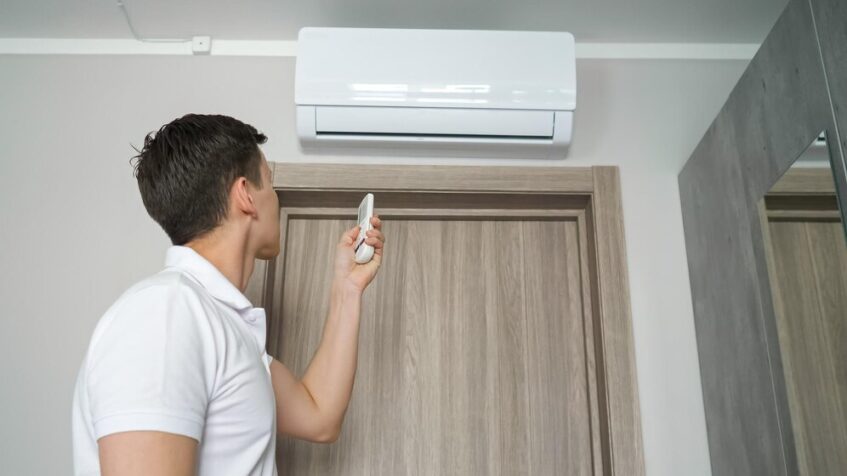
Maintaining Proper Humidity Levels in Your Home
Maintaining Proper Humidity Levels in Your Home
Proper humidity levels are crucial for creating a comfortable and healthy environment within your home. Whether it’s too dry or too humid, imbalanced humidity can lead to various issues such as respiratory problems, mold growth, and damage to furniture or electronics. Finding the right balance is essential for maintaining optimal indoor air quality and overall well-being. In this blog post, we’ll explore the importance of maintaining proper humidity levels in your home and discuss practical tips on how to achieve and maintain them effectively.
Understanding Humidity Basics
Humidity refers to the amount of moisture present in the air. It’s typically measured as a percentage, with higher percentages indicating more moisture. Humidity levels can vary greatly depending on factors such as weather, location, and indoor activities. Generally, humidity levels between 30% and 50% are considered comfortable for most people.
Too low humidity can lead to dry skin, irritated respiratory passages, and static electricity buildup, while excessively high humidity can promote mold growth, dust mites, and discomfort. Understanding these basics is essential for effectively managing humidity levels in your home to ensure a comfortable and healthy indoor environment for you and your family.
The Impact of Imbalanced Humidity
Imbalanced humidity levels can have significant consequences on both your health and the condition of your home. When humidity is too low, it can cause dry skin, irritated nasal passages, and respiratory issues such as asthma or allergies. Additionally, low humidity can lead to wooden furniture cracking, paint chipping, and static electricity buildup.
On the other hand, excessive humidity can create a breeding ground for mold, mildew, and dust mites, exacerbating respiratory problems and causing damage to walls, ceilings, and furnishings. Understanding the impact of imbalanced humidity is crucial for taking proactive steps to maintain optimal levels and create a comfortable, healthy living environment.
Importance of Optimal Indoor Air Quality
Optimal indoor air quality (IAQ) is vital for promoting overall health and well-being. Poor IAQ, often resulting from imbalanced humidity levels, can lead to a range of health issues, including respiratory problems, allergies, and even long-term complications. Maintaining proper humidity levels helps prevent the buildup of pollutants such as mold, dust mites, and volatile organic compounds (VOCs), which can exacerbate respiratory conditions and trigger allergic reactions.
By ensuring adequate ventilation and controlling humidity levels, you can significantly improve IAQ, reducing the risk of respiratory ailments and enhancing the comfort of your living space. Investing in measures to optimize indoor air quality is an investment in your family’s health and quality of life.
Respiratory Health and Humidity
Humidity plays a crucial role in respiratory health, as both excessively high and low humidity levels can pose risks. Low humidity can dry out nasal passages and throat, making individuals more susceptible to respiratory infections and exacerbating symptoms for those with asthma or allergies. Conversely, high humidity creates a breeding ground for mold, dust mites, and other allergens, triggering respiratory issues and aggravating conditions such as asthma and chronic obstructive pulmonary disease (COPD).
Maintaining balanced humidity levels in your home is essential for supporting respiratory health, minimizing respiratory symptoms, and ensuring a comfortable living environment. By controlling humidity, you can help alleviate respiratory discomfort and reduce the risk of respiratory ailments for you and your family.
Combating Mold Growth
Mold thrives in environments with excessive moisture, making it a common problem in homes with high humidity levels. To combat mold growth effectively, it’s crucial to maintain proper humidity levels within the recommended range of 30% to 50%. Additionally, ensuring good ventilation in areas prone to moisture buildup, such as bathrooms, kitchens, and basements, can help prevent mold formation.
Regularly inspecting and promptly addressing any leaks or water damage is also essential for preventing mold growth. In cases where mold has already developed, thorough cleaning with appropriate solutions and addressing the underlying moisture issue is necessary to eradicate it completely. By taking proactive measures to combat mold growth, you can protect your home and safeguard your family’s health.
Protecting Furniture and Electronics
High humidity can cause damage to furniture and electronics, leading to warping, corrosion, and malfunctioning. Wooden furniture is particularly susceptible, causing cracks and structural instability. Electronics are also susceptible, causing short circuits, corrosion, and decreased lifespan.
To protect these items, maintain optimal humidity levels, use dehumidifiers in high humidity areas, ensure proper ventilation, invest in moisture-absorbing products, and store electronics in climate-controlled environments. By taking proactive steps, you can prolong the lifespan of your items and reduce the need for costly repairs or replacements.
Signs of Humidity Imbalance
Proper humidity levels in your home are crucial for a healthy living environment, but imbalanced humidity can cause health issues and home condition issues, so recognizing signs is essential. Here are four common signs to watch out for:
- Condensation: High humidity levels can cause condensation on windows, walls, or pipes, indicating high humidity levels. This buildup of water droplets can promote mold growth and cause surface damage..
- Musty Odors: Musty or damp odors in your home indicate mold or mildew growth, which thrives in high humidity environments, and often indicate hidden moisture issues that need immediate attention.
- Warped or Buckled Surfaces: Humidity fluctuations can cause wood furniture, flooring, or trim to warp or buckle, indicating excess moisture in the air, which can lead to structural compromise over time.
- Respiratory Discomfort: Humidity imbalances can worsen respiratory issues like asthma and allergies, as dry air can irritate nasal passages and throat, while excessive humidity can stimulate allergen growth, triggering sensitive symptoms.
Tips for Monitoring Humidity Levels
Monitoring humidity levels in your home is essential for maintaining optimal indoor air quality. One of the simplest ways to monitor humidity is by using a hygrometer, a device specifically designed to measure relative humidity. Place hygrometers in different rooms throughout your home to get a comprehensive understanding of humidity levels.
Additionally, paying attention to physical indicators such as condensation, musty odors, and changes in the condition of furniture or electronics can provide valuable insights into humidity levels. Regularly inspecting and addressing any signs of humidity imbalance can help prevent potential issues and ensure a healthy and comfortable living environment for you and your family.
Adjusting Humidity for Comfort
Maintaining optimal humidity levels is essential for ensuring comfort in your home. During the winter months, indoor air tends to be drier due to heating systems, which can lead to discomfort and respiratory issues. Using humidifiers to add moisture to the air can help alleviate dryness and promote a more comfortable environment.
In contrast, during the summer, humidity levels may rise, causing discomfort and exacerbating allergies. In such cases, using dehumidifiers can help remove excess moisture and create a more pleasant indoor atmosphere. By adjusting humidity levels according to seasonal changes and personal preferences, you can enhance comfort and overall well-being in your home.
Humidity Control Techniques
Humidity control techniques are crucial for maintaining a comfortable and healthy indoor environment. Utilizing ventilation fans in high-moisture areas like bathrooms and kitchens aids in expelling excess humidity. Sealing windows and doors prevents outdoor humidity from permeating indoor spaces. Installing vapor barriers in basements and crawl spaces is effective in blocking moisture infiltration into the home’s structure.
By combining these methods with the targeted use of humidifiers and dehumidifiers, you can effectively regulate humidity levels. Implementing these techniques ensures a balanced indoor atmosphere, promoting optimal comfort and safeguarding against issues associated with humidity imbalance.
Seasonal Considerations
Humidity levels fluctuate throughout the year, with distinct seasonal variations that impact indoor comfort. During the winter, indoor air tends to be drier due to heating systems, while summer months often bring higher humidity levels. Understanding these seasonal considerations is essential for effectively managing humidity levels in your home.
During the winter, using humidifiers can help add moisture to the air, while dehumidifiers may be necessary during the summer to remove excess humidity. Regularly monitoring humidity levels and adjusting strategies accordingly can help ensure comfort and optimal indoor air quality year-round.
Consulting Professionals for Humidity Management
In cases where humidity issues persist despite your efforts, consulting professionals specializing in indoor air quality and humidity management may be necessary. HVAC technicians and indoor environmental experts have the expertise and tools to assess humidity levels accurately and identify underlying issues contributing to humidity imbalance.
They can recommend tailored solutions, such as HVAC system adjustments, installation of whole-house humidifiers or dehumidifiers, or moisture remediation measures. By seeking professional guidance, you can address humidity issues effectively and create a healthier, more comfortable indoor environment for you and your family.
Maintaining proper humidity levels in your home is essential for ensuring comfort, preserving indoor air quality, and safeguarding against potential issues like mold growth and structural damage. By implementing the techniques discussed and staying vigilant for signs of humidity imbalance, you can create a healthier and more comfortable living environment for you and your family.
If you need assistance with humidity control solutions or have any questions, don’t hesitate to reach out to Cool Factory, Inc. Our team of experts in Sterling, VA, is ready to help. Contact us at (703) 713-5113 to schedule a consultation and take the first step towards optimal indoor air quality.






